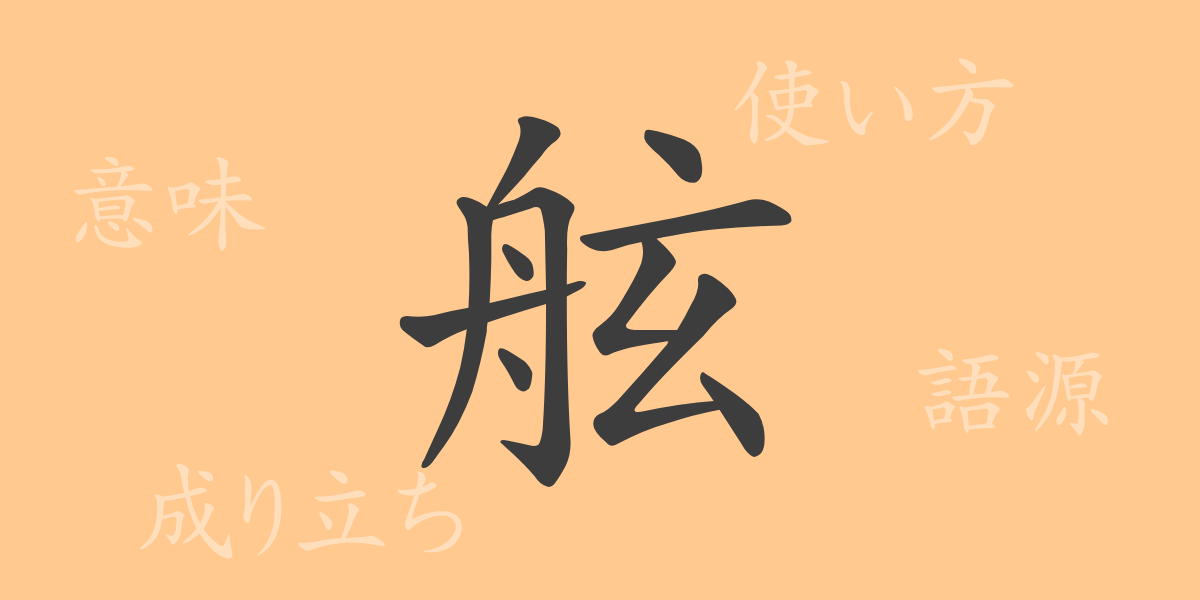The kanji deeply rooted in Japanese culture possess a beauty and meaning that transcend words. Among them, “舷(げん/gen)” is particularly known as a term related to ships, evoking Japan’s rich maritime culture. In this article, we will explore the charm of the kanji “舷(げん/gen),” delving into its origin, meaning, usage, and even the idioms and phrases that feature it.
Origin of 舷(げん/gen)
The kanji “舷(げん/gen)” has been used since ancient times to mean the side of a ship, particularly the edge of the vessel. This character evolved from ancient Chinese pictographs that depicted the shape of a ship. It symbolizes the planks of a ship floating on water, and over time, it was refined into its current form.
Meaning and Usage of 舷(げん/gen)
“舷(げん/gen)” is primarily used in terms related to the sides of a ship. Specifically, it often refers to the side of a ship’s hull or the edge of a vessel, frequently appearing in maritime terminology. Additionally, it can be used metaphorically to refer to the sides or edges of various objects or situations.
Readings, Stroke Count, and Radical of 舷(げん/gen)
Here are the details about the readings, stroke count, and radical of the kanji “舷(げん/gen).”
- Reading: The On’yomi (音読み/おんよみ) reading is “ゲン(げん/gen).” There is no specific Kun’yomi (訓読み/くんよみ) reading.
- Stroke count: “舷(げん/gen)” consists of 12 strokes.
- Radical: The radical is “舟(ふねへん/funehen),” which relates to ships or boats.
Idioms, Phrases, and Proverbs Using 舷(げん/gen)
Many idioms, phrases, and proverbs featuring “舷(げん/gen)” are related to ships and the sea. For instance, “舷を切る(げんをきる/gen o kiru)” describes a ship suddenly changing direction and is used metaphorically to mean abruptly changing the course of something. “舷窓(げんそう/gensō)” refers to the porthole on the side of a ship, evoking images of sea voyages.
Conclusion About 舷(げん/gen)
The meaning embedded in each kanji character is profound and illustrates the richness of the Japanese language. “舷(げん/gen)” is a prime example, highlighting the significance of ships and the sea to a maritime nation like Japan. By understanding the meaning and cultural background of “舷(げん/gen),” we gain insight into Japan’s history and culture through language.

























